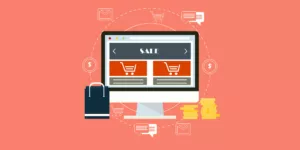When it comes to producing conversions through ecommerce stores, exhibiting visual content can do miracles. Users are always fascinated with images, graphics and infographics compared to text oriented content for the most obvious reasons. Images can pack a lot of information and deliver it in one punch without compromising the user’s interest. They have the ability to convey a much bigger picture while entertaining the user and keeping them engaged with the content. However, in order to make the best out of your image galleries you need to make sure your images are shown up to mark so customers can find them interesting and informative at the same time. In this article we will share 10 useful features that can help you optimize your image gallery.
Why Add Images?
90% of information we receive in our brain is visual content. It has the potential of engaging online users and converting them into customers. Research explains this by testing the memory of an average customer. It was found that an average customer can remember 10% textual information for 3 days after reading it, but when the same text is set along with an image the percentage can go up to 65%. The study also pointed out that 46% of online marketers firmly agree that adding visual content is imperative with a replenishing supply if store conversion must increase. [source: Changingminds]
Zooming Feature
First off, you need to make it large enough for everyone to see. Aside from being an immaterial store, ecommerce shopping also lacks the touch and feel sensation that shoppers get in brick and mortar stores. Image zooming is the only function capable of bringing that experience closest to your potential customers. An enlarged image not only shows all the product features more clearly, but also enhances the overall look of the product when shown against a good contrast. Zooming features are integrated in most premium Image Gallery plugins such as Magento image gallery extension, but you can also contact your developer to do some improvements and get it done. You can set its default zoom size, zoom-in/zoom-out gestures and add other zooming icons.
360Angle
Giving your customers the facility to enlarge images and enhance visibility of your product features is a good step to a healthy engagement. However, a lot of work is still on order to make them conversion friendly. Another feature that makes your image galleries a fun time to interact with is 360o angle. In certain cases, products need to exhibit their external features more than their internal. Showing just a measly image can prevent a potential lead from converting.
Adding a 360o angle rotation function will allow visitors to view product images from all its sides, leaving nothing to the imagination. Like the zooming function, 360o rotation feature helps the the customer receive brick and mortar store shopping experience by revealing every hidden angle to the viewer, giving the trust and assurance required for producing conversion. If adding a 3D animation model is not your cup of tea, you can just add images to the gallery showing multiple photographed angles of the product.
HD photography
HD photography is among the cardinal factors that determine if your image gallery is worth seeing or not. HD photography focuses on high quality images to expose the smallest details of the subject. Low quality images not only fail to show the vital details within the picture, but also reflect terribly on the company. HD photography shows richer image coloration and increases its zoom-ability when magnified. Some products contain special features that are the unique selling points. Without having them clearly exposed you cannot sell them productively. You can use a DSLR to photograph HQ images for your products. A good DSRL is not cheap so make sure you invest enough to cover it from your ROI.
Reduced Image Size for Faster Loading
Optimizing image gallery is not just about getting your image quality on point. Its true HQ images go beautifully with your web design aesthetics; but overusing them can also compromise your website speed. You cannot pick image quality over your website speed. Since HD photography is based on covering even the smallest of details, the images produced take a lot of space for that particular reason. This makes them difficult to upload and and even worse, turns them into lag factories for online stores that are not built to accommodate their specifications. Hence getting your image size optimized is imperative to ensure a lag free experience while opening images and interacting with image gallery functions. A compromised speed can be bad for both the merchant and the customer.
Dedicated Page
Dedicated page stores all the images of your website and categorizes them according to their content. By creating a separate page, customers can view your product images directly without any interference of unwanted content that might distract customers. This gives customers an ideal user experience when they want to view product images only. You can add features to optimize image galleries on the dedicated page such as customized page title, limit images shown per page, custom product gallery titles and image short descriptions. Several extensions and plugins are available that offer dedicated image gallery page. You can add them according to the ecommerce platform you are using.
Lightbox
Lightbox is another useful feature that can help you optimize your image galleries to generate conversions for your store. Lightbox allows your customers to remain on the page and open the product image to enlarge it. Its extremely useful when displaying product images as short enclosed icons on dedicated pages. You can customize your lightbox options from the back end as well by adding image title, image description and a link to the product page. Light box allows a fast and easy image viewing experience without being redirected to another page. It is highly recommended for stores that contain large directories of product images.
White Background
The background is one of the primary reasons your images fail to address the unique feature of your products to the viewers. By placing them against a white background you will make your products pop. Its efficient, clean and simple and excellent means to create professional appeal to your content.
To do this you can use applications and tools such as pen tool in the Adobe Photoshop. This will make the process easier since its does not require any technical knowledge to use it, but you can avoid this by photographing your products against a white background from the start. Using tools is not always the best idea since they can produce choppy and inconsistent results. If you must add real consistency, shoot them on white backgrounds before you add them to your store.
Add Alignment to Your Products
Product images can never come together in harmony if they lack alignment. You can easily do this by creating a template and adding guidelines to integrate with your product images. This will introduce consistency and order that will reflect positively on your website.
There are several photo editing software’s available for the task which include guidelines features as well. However, most web specialists prefer using Adobe Photoshop due to its feature rich interface and step by step process.
Show Images with All Color Options
Providing multiple photos is a safe and effective practice. Like we mentioned above, showing different angles is a powerful alternative to the touch and feel sensation of brick and mortar stores. Similarly, when color options are involved, you need to make sure your product exhibits all its colors available to the customer. Product image of a white sneaker will leave the viewers to their imagination if they intend to buy it in red or yellow options. You can add one image per color and display it in drop down option so the customer can interact with it as simple as possible. Showing too many images with the same color can also be bad for your products.
SEO
Last but not the least, your need to make your images SEO effective. You can do this by adding titles, meta descriptions and alt tags etc. to rank them on search engines and increase their SEO value. It might not be a task that you may be able to do alone, but a good SEO resource in your team can easily take it up without you having to read Google’s publishing guidelines. This will save the hassle and give your images a credible optimization to get online exposure.
Final Thoughts
What are you waiting for then? By implementing all these tips and tricks to optimize your images you can get a health dose of traffic regularly on your ecommerce website. This won’t work with a swish of wand though. Make patience your virtue and use these practices regardless of their results in the short term. There is a steep learning curve involved where your time is the investment. Once your images are capable of acquiring traffic they deserve, your conversions will start soaring in no time.
Author Bio:
Simon Walker is an experience eCommerce consultant with an industry rich experience of 7+ years. He currently works at FME Dubai web design firm, where he has developed Magento extensions, themes & custom eCommerce projects.








